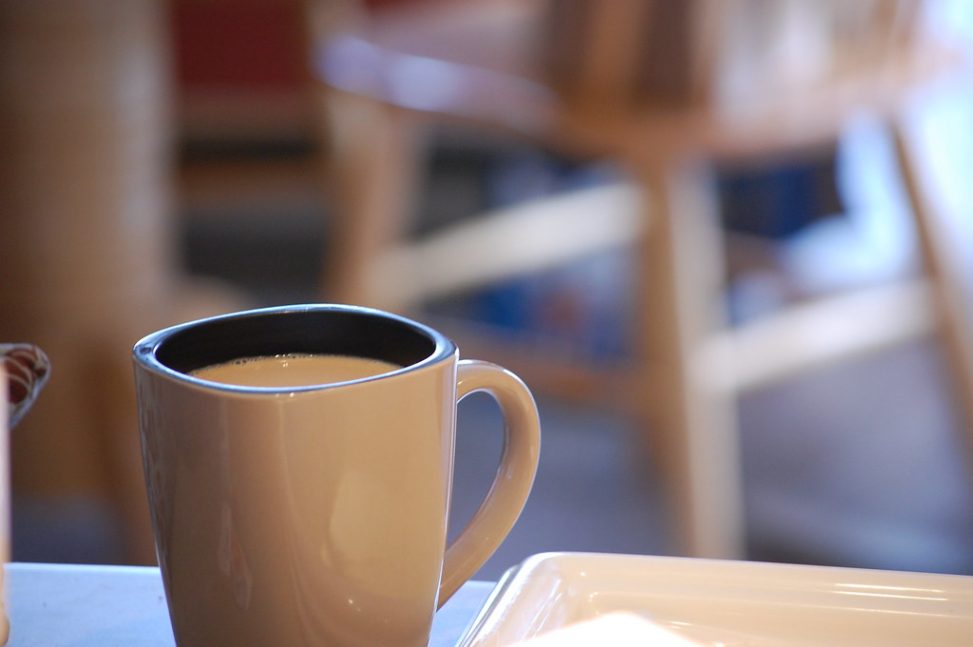For many of us, our mornings begin with grabbing a cup of joe on our way out the door, discarding the used coffee grounds without a second thought as worries of the day ahead trickle into our minds. But, perhaps if you had a particularly relaxing morning and the time to contemplate the fate of your coffee grounds, you wouldn’t have thrown them away so quickly, especially if you knew they could help cleanse polluted water.
Approximately 5,000 – 10,000 tons of textile dye are discharged into local waterways every year.
In February 2020, a team of chemists from Malaysia and Nigeria published a report on the application of the chemical polyethyleneimine on coffee grounds and its ability to absorb waste textile dyes in water sources. While absorption is already a popular method of dye extraction in water, biowaste (organic material that can be broken down such as food scraps, sawdust, and manure) offers an environmentally friendly and cheap alternative to traditional synthesis methods.

Many aquatic plants die from lack of sunlight due to textile dyes on the water’s surface. Photo courtesy of Creative Commons.
This puts textile dyes as the tenth highest pollutant found in rivers, contributing a staggering 17-20% of industrial water pollution. The waste dyes can prevent sunlight from reaching submerged aquatic plants, negatively impacting their photosynthesis process and throwing the entire ecosystem off balance.
The team investigated how they could combat the two most common dyes found in polluted water: Congo Red and Reactive Black. On their own, coffee grounds do not absorb these dyes efficiently, with only 14.35% and 7.42% removal respectively. However, when modified with polyethyleneimine, the coffee waste mixture is able to extract 76% and 80% of the dye from surface water.

Excess dye that is not properly collected can become runoff and enter local water sources. Photo courtesy of Creative Commons.
Reactive Black was more susceptible to the polyethyleneimine addition because its chemical structure has more functional groups that readily react with the polyethyleneimine-coffee mixture. These functional groups are negatively charged sulfonate groups, meaning they have an extra electron that makes them negative and are comprised of one sulfate and three oxygen atoms. This excess of negative charge allows the dye to latch on to the positively oriented coffee waste. After they connect, the mixture of dye and coffee can be collected, thus cleaning the surface area of the water and enabling sunlight to pass through once more.
In the future, the team of chemists hopes to continue research on their simple and cost-effective method to absorb textile dye from surface water. They plan to apply their coffee-waste-polyethyleneimine mixture to other contaminants in an effort to reduce human impact on water-based ecosystems.
Wong, S., Ghafar, N.A., Ngadi, N. et al. Effective removal of anionic textile dyes using adsorbent synthesized from coffee waste. Sci Rep 10, 2928 (2020). https://doi.org/10.1038/s41598-020-60021-6

Sherzilla
It’s amazing to see how such an everyday household product such as coffee grounds could help us battle pollution in such an intricate way
Alex
This title was very eye catching! That is so interesting that such a simple everyday item could have such a complex way of being a possible solution to a huge world issue! Very fascinating article and well written.